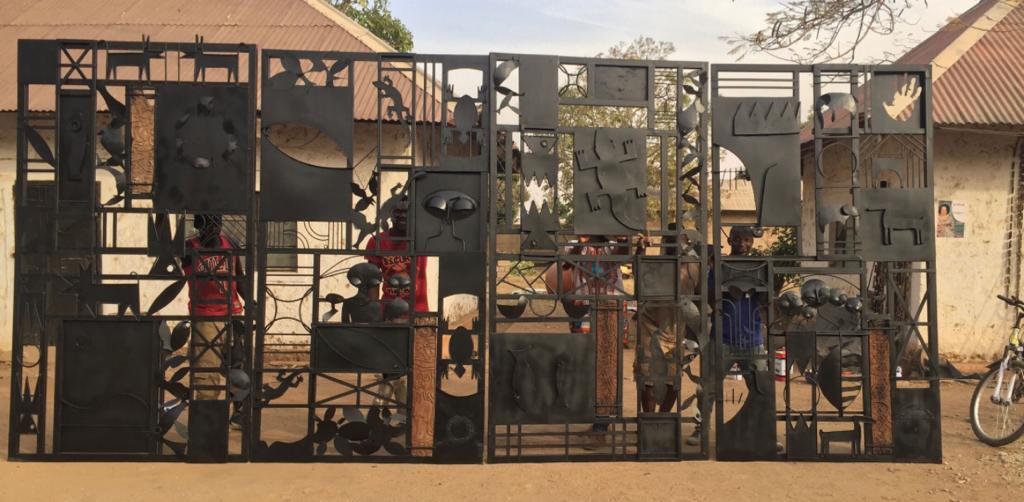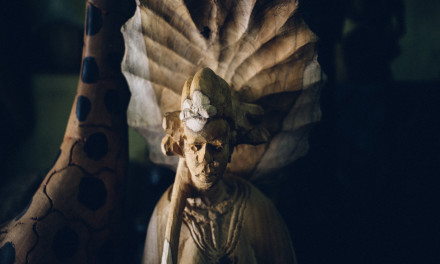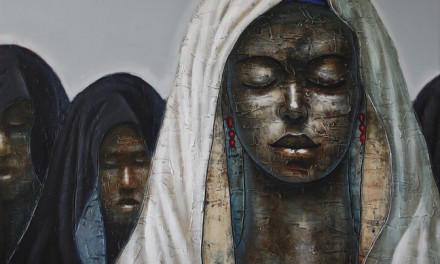AM: Are you a self- taught artist or did you attend art school?
Olaolu: Growing up as a child, I was very creative and proficient in drawing but art was not in the league of courses I wanted to study in the university. As I grew older, it became clearer to me what I wanted to become in future and that prompted me into studying Fine Arts at the university.
I trained as a professional sculptor at the Department of Fine Arts, Ahmadu Bello University, Zaria (Zaria Art School), where I earned a Master of Fine Arts degree in Sculpture. To further broaden my knowledge of sculpture and the dynamics of art as a whole, I am currently pursuing a Ph.D. degree in the same discipline.
AM: Do you think it’s important to go to art school? If a young artist in secondary school comes to you for advice and says he/she is interested in the arts, would you place as much importance on them going to art school or would you advise them to do things differently?
Olaolu: In my own opinion for an aspiring young artist, an art institution might be the best place for such an individual. Art in itself is broad and that’s why it is sectionalized, or should I say compartmentalized to help the student choose the area he or she would want to specialize in, after being taught the basic art knowledge. Courses found at art schools include Sculpture, Graphic Design, Photography, Painting, Ceramics just to mention a few. There is also a curriculum attached to these courses, which has been designed to help broaden the student’s knowledge of art in its entirety. It aids to explore their talents and also build their confidence which often helps them to take creative risks and step out of their comfort zones to explore new things in other areas of their lives.
The mistake most people make is that they think art institutions only teach art; but that’s not absolutely true because they also expose students to courses which help them to learn other wonderful life skills that can be useful for the students’ future careers. It is also nice to note that art schools offer a unique learning experience for students who are serious about the arts. They create a platform for the students to produce their art pieces and also expose them to the rudiments of organizing exhibitions to showcase their art pieces.
AM: What was support from your parents, extended family and friends like?
Olaolu: My parents were very supportive and understanding about my art career; although they found my way of thinking weird at times. My Dad especially made sure I never lacked anything in the aspect of art materials and sculptural tools. I had and still have wonderful friends who believed so much in me and I got their maximum support. I’m so grateful for it.
AM: What are your thoughts on criticism, how do you deal with it?
Olaolu: Criticism is actually a part of an artist’s life. This thought has helped and taught me over the years not to take things personally. It has been observed that as soon as you are done creating an art piece and bring it to the open for people to see, you are absolutely opening the door to other people’s opinions.
I often take my time to read their comments and reflect on the critique. There were times when people made critical and valid criticisms and they helped to improve on my subsequent works, while some others made relatively deliberate efforts to talk about one’s piece in a negative light, for reasons best known to them.
AM: As an artist, do you belong to any associations?
Olaolu: Yes. I am a Member of the Society of Nigerian Artists; Member, Sculpture Association of Nigeria, and also Member, Arts Council of the African Studies Association.
AM: What is the business of art like in Nigeria? How do you get jobs; distribute your art (galleries, exhibitions, art shows, art shops etc.)?
Olaolu: Well, I’ll say it’s relatively good for some artists, while some others are working hard to stand on their feet. In recent times I have focused more on the erection of monumental statues, so most times I send proposals to some of my clients. I get patronage through referrals as well.
AM: What are your thoughts on artist collectives and collaborating with other artists?
Olaolu: I am a strong advocate of mentorship, sharing of ideas and collaborative production of artworks, especially if there is a lot for other artists to benefit from the experience. There are times when I get commissioned projects to create a monumental statue to specification; it’s only wise and advisable of me to bring on board my team of sculptors. During such processes, I also bring in one or two of my interns who have insatiable thirst for learning the use of new materials and techniques in sculpture. This wave does not only provide financial benefits to the sculptors in the team, it also creates the necessary platform and experience for them to tackle similarly tasking sculptural escapades in the future.















